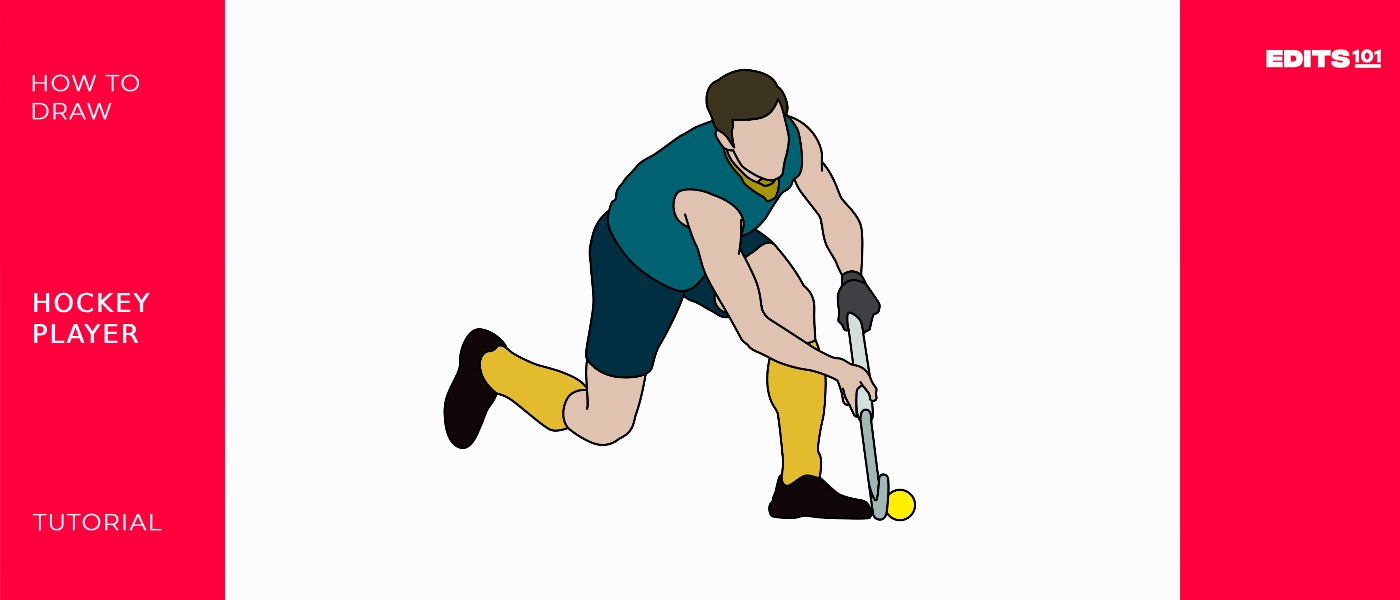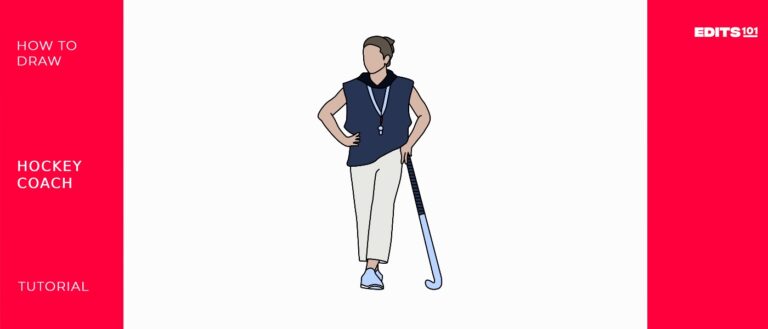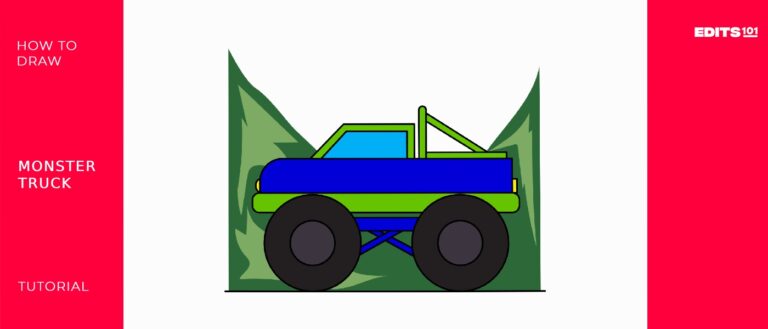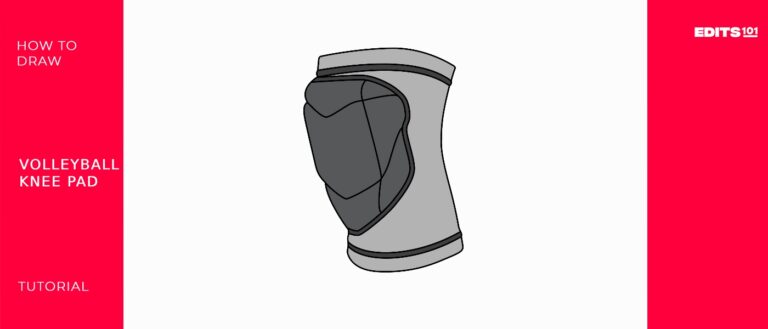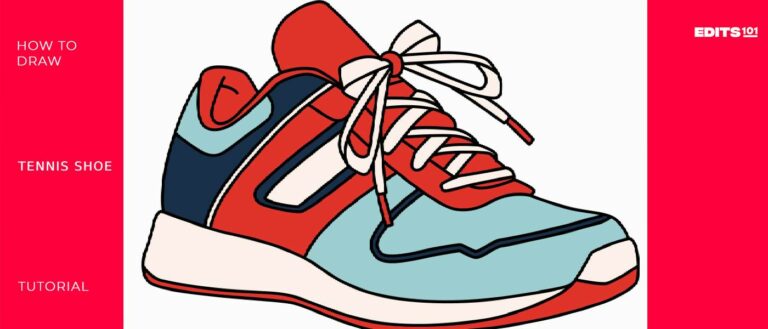How To Draw A Field Hockey Player | A Comprehensive Guide
Field hockey is a fast-paced, high-energy sport that requires immense skill and coordination. Learning to draw a field hockey player allows young aspiring artists and fans to celebrate the athletic talents needed across this exciting game.
| Steps | Complexity level |
| Draw the head | 2 |
| Draw the jersey | 3 |
| Draw the hands | 3 |
| Draw the pants | 3 |
| Draw the legs | 3 |
| Draw the shoes and socks | 4 |
| Draw the stick and ball | 4 |
What you will need
- Paper
- Pencil
- Eraser
- Colors
How to Draw a Field Hockey Player
The seven steps in this guide will help you draw a hockey player.

Step 1: Draw the head
We begin conceptualizing our field hockey athlete drawing by lightly sketching the head anchors using a pencil. Focus on structuring an oval sphere to represent the helmet enclosure surrounding the upper facial planes. Be sure to tilt that foundational oval at an angle implying dynamic motion – think of the player’s perspective charging ahead toward competitive goals downfield. Underneath the helmet oval around its lower vertical midline axis, tuck a smaller, appended, slim, tilted oval to illustrate the lead protagonist player’s visage features in climax athletic exertion.
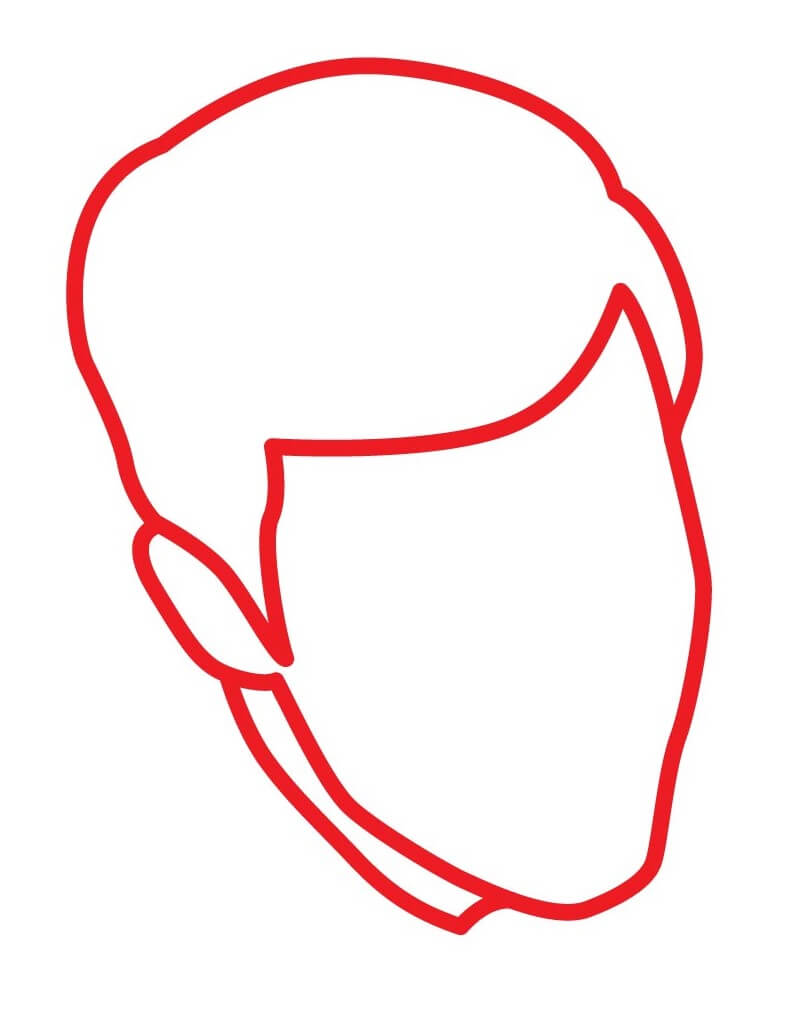
Connect a curved pencil line at the very bottom for a sturdy chin foundation tied to the Hoplite-reminiscent protective face cage panel outline flows built up more defined horizontally near both left and right sightline fields. Do not press too ambitiously here with strong dark marks but remain lightly gestural, searching for implied placement essence rather than overstated perfection at this early ideation phase. Overall, head shape tilt angle cues and proportional relations will help solidify the visual narrative of directed forward vacancy, activating our illustration from its topmost apex origin anchor soon enough.
- Angled helmet shape around tilted face oval
- Connect chin line to cage panel frame with visor
- Tilt angles to imply forward motion
Step 2: Draw the jersey
Having loosely digitally decoded our lead field hockey combatant player’s helmeted head cradle and facial identity now established as a foundation base from Step 1 pencil line contour gestures, successive flows logically the attached costume uniform jersey shirt and number identification overlay details. Both left and right sloped trapezoidal shoulder pillars connect an arched line curvature to represent the athletic polyester jersey top’s loose collar hole circumference neckline shape. Building downward, sketch simplified triangular corpus trunk sleeves for each bicep/arm branch, leaving hands truncated by elbow joints but visually implying the eventual presence of key equipment instruments held in grasps to emerge proficiently on site soon.
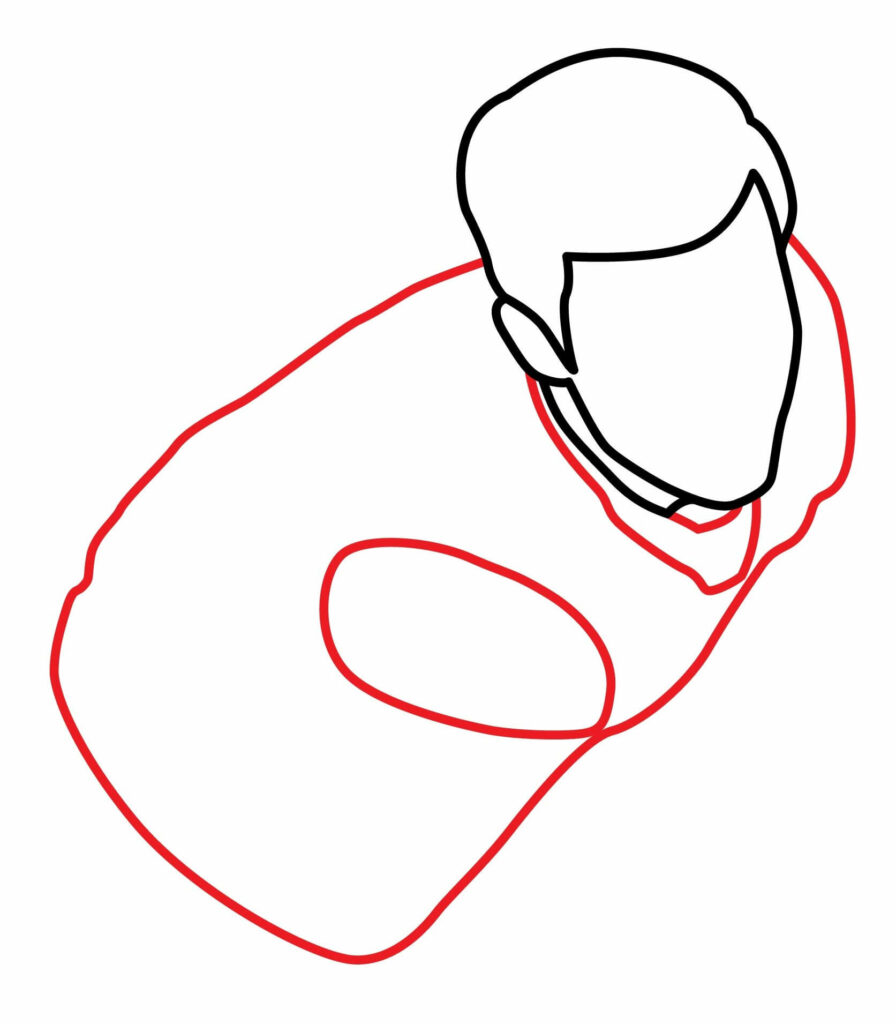
Crisscrossing diagonally across these jersey shirt rectangle swathes, carve gentle texture lines evoking the breathable ventilation mesh fabric often integrated behind iconic emblazoned team insignia graphics and logotype identifiers – prime numbered focal points of personalized fan cultural worship bound up iconically through these mass-produced replica athletic garment costume signifiers. Taper the hemline waist triangular carefully for accurate proportional anatomical purposes, exposing midriff cutouts or loosening past hip joint landings.
- Connect v-neck jersey collar shape with short striped sleeves
- Add an inverted triangle skirt/torso section
Step 3: Draw the hands
Now conjuring those previously suggested mere truncation elbow hinge gaps as placeholder positional proxies, from which we can marrow evolve more defined appendage weapon limbs, map out first the non-dominant free hand and arm set using curved silhouette lines for left mitten shape and a corresponding shoulder-to-wrist sleeve branch vector. Pressing graphite more committed here strengthens your light preliminary blocked digit armature. Then, mirror opposite on the dominant stroke side, conceive the bulbed oval shape cross-sectioned hockey stick handle control lever itself first, connected to its athletic governing grip authority – our protagonist’s throttle right hand mitt conduit wrapped assuredly around the composite shaft base.
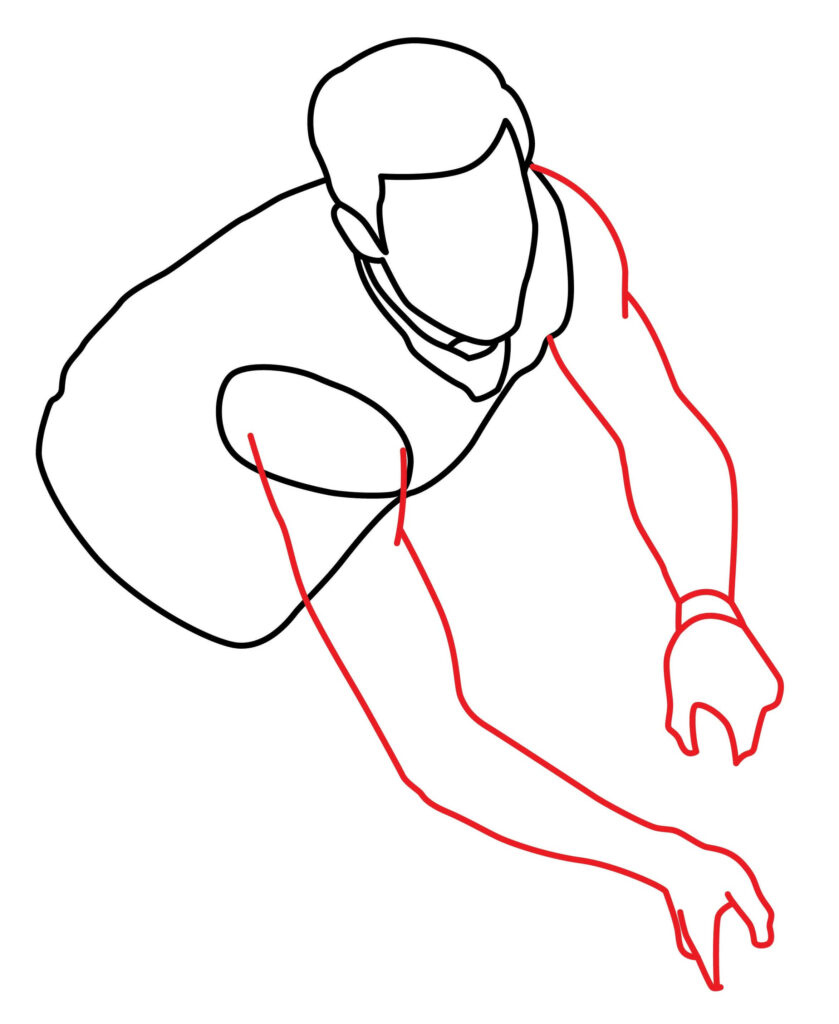
Lifelike real-world tension physics exponents here will naturally guide responsive line weights reactively as clenched finger variables and surface contact pressure adhesion point alternate tonally across the observational reference beats. So stay sensitively attuned when dynamically contour chasing athletic equipment tool weapon implements wielded in hands as pragmatic winning game power brokers directly tied to score-setting statistical performance data defendants delivering our player warrior safely beyond competitor match risks into all-star drafting visibility spotlights!
- Left-hand mitten gripping oval stick
- Right arm extended forward in motion
Step 4: Draw the pants
Having built our hero field athlete player top half foundations stabilizing e key upper mobility tools, next launch structural support bridges for the propulsive lower half horsepower generators. Synthesize from hip joints down, quadruple wedge thigh armor pads gaping open around an inverted triangular groin, tightly stretched polyester jersey short fabrics melding into leggings, and eventually cleated feet hinges as last outpost anchors.

Visualize expanded flare pats at fullest mass extents, hugging upper quads before sleek tapered shin guards streamline elegant aerodynamics for unencumbered kicks and lunge strides. Focus on emphasizing forward-leaning weight distribution load vectors originating out from that lowest midpoint groin crevice, adding natural gravity physics realism…then carving negative shapes around outlined muscle groups and underlying kinetic bone armatures until sturdy simplified anatomical pillar prototypes emerge convincingly to tread test!
- Sketch flared hips and angled thigh pads
- Taper knees to curved shin guards and cleated boots
Step 5: Draw the legs
Build downward now, engaging those last bodyweight carriage spring supports – athletic, lean legs that propel our hockey player protagonist across victory finish lines. Whether lean jogging on balls of feet or digging cleats forcefully hard backward in resistant directional friction, capture motion gestures with vivid line quality contrasts. Sketch that nearer foreground thigh using foreshortened rounded compression lines versus more distant receding calf outlines further stretched with angular jagged tension points instead.
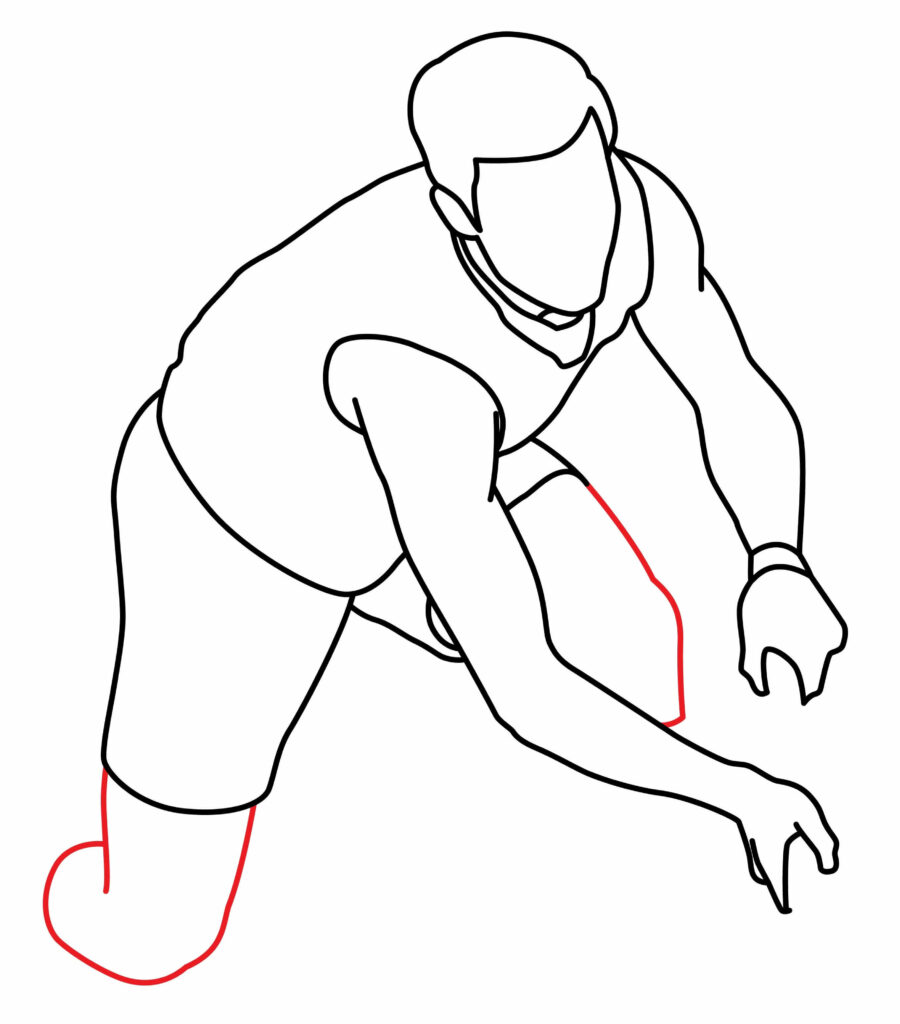
Alternating these descriptive markmaking languages mirrors our human eyes’ depth perception fields naturally processing multi-faceted environmental stimuli flows in layered variable velocities spread across picture plane facades. After establishing leg anatomy proportions correctly, following articular crucial bone landmarks with simplified ball joint sockets and piston lever limbs to enable imaginatively inventing dynamic kicking poses, running strides, lunging 10 excerpts, pivoting spin maneuvers, or deceptive fake change directional gestures potentially suitable towards successfully dodging obstacles defenses en route to scoring goals!
- Front thigh to knee and cleat foreshortened
- Back calf extended for power kicking
Step 6: Draw the shoes and socks
Our field hockey striker all-star MVP champion prototype requires surety foot traction over slippery grass terrain surfaces, which we shall address through specialized cleated shoes and companion lower leg sleeves. Starting downward from the kneecap rings, encase shins using alternating contrasting vertical striped parallel bands like warrior tabard armor plates streamlining muscular aerodynamic profiles. Nearing the ankle hinge gaps, carve shoe plinth stages using zigzag panels textured for optimal breathability against blistering long-match sweat strains.
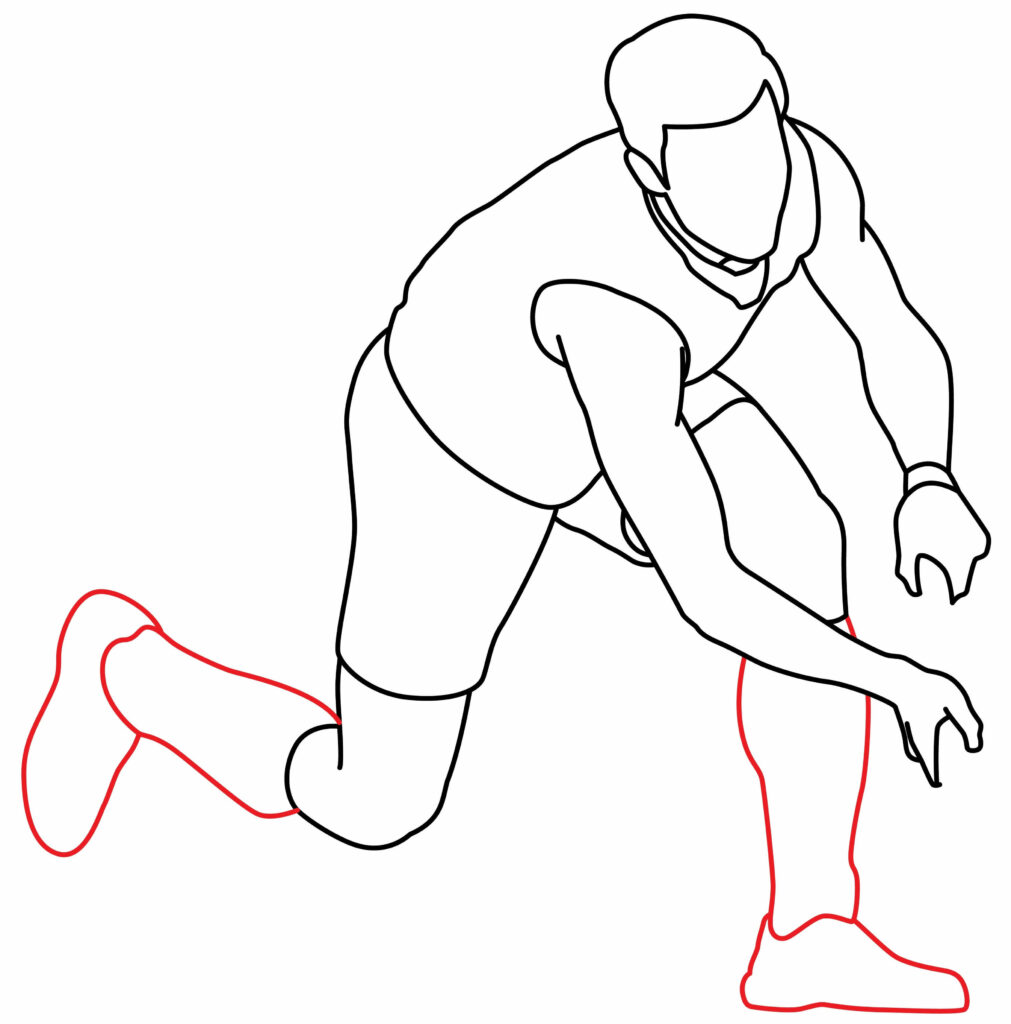
Integrating spike studs across these shoe sole beds enables satisfactory ground grips around slippery cornering while allowing toe spring lifts that transfer powerful axis rotating energy up through twisting torso force vectors, adding substantial ball-striking impact stresses when competitively engaging. Now lacing athletically across forward-facing facades tie ultra-secure fit closures, completing our player’s agility-enhancing equipment accouterment foundations in layered preparatory readiness waiting for only predatory opportunity signals their sprung release towards advantageous puck field control drives ultimately!
- Vertically striped sock contours on shins
- Angled cleated shoe panels with studs
Step 7: Draw the stick and ball
Complete the field hockey stick using straight, curved lines for its hooked silhouette. Position a circle puck at the end to imply a pushing pass across the vivid green field.

- Silhouette stick shape with a curved hook
- Circle puck at the end for passing
Step 8: Congratulations! Your field hockey player Is Ready.
You’ve completed your illustration of a dynamic hockey player. Take a moment to admire your creation—it’s a testament to your creativity and dedication. Now, if you’d like, you can take your drawing to the next level with some additional steps.

Taking the hockey player to the Next Level
We are done sketching; what’s left is coloring and adding a background to take our drawing to the next level.
Adding a Background
Consider embedding your illustrated field hockey player in a compositional environment, providing helpful narrative context. Sketch the vivid green grass of a stadium pitch using short vertical lines textured with detailed folds and dirt patches for an authentic game setting. Populate the foreground with other players in action – draw dynamic figures contesting the ball to imply an ongoing match story. Consider featuring elements like the ball, goals, coaching signs, or cheering crowds to flesh out the implied painted storyboard. Erase non-essential markings to accentuate your central athlete as the focal point amidst the contextual competition atmosphere.
Adding Color
Vibrant, strategic color choices can enhance mood, drama, and ingenuity in finished field hockey artwork compositions. Consider standard material expectations when coloring – the metallic glint of helmet grill and padding plates, smoothly glossed wooden sticks, and the sturdy stitched leather sphere shot across the grass. Adapt team jersey and sock patterns on players using color-keyed identifiers. Within environmental settings, shade vivid green grass, red clay dirt patches, and standard white field chalk marking lines. Aim for logical realism while allowing creative embellishment through personalized palettes if desired. Incorporate small, strategically placed accent hues around focal points to amplify cohesion and dynamism!
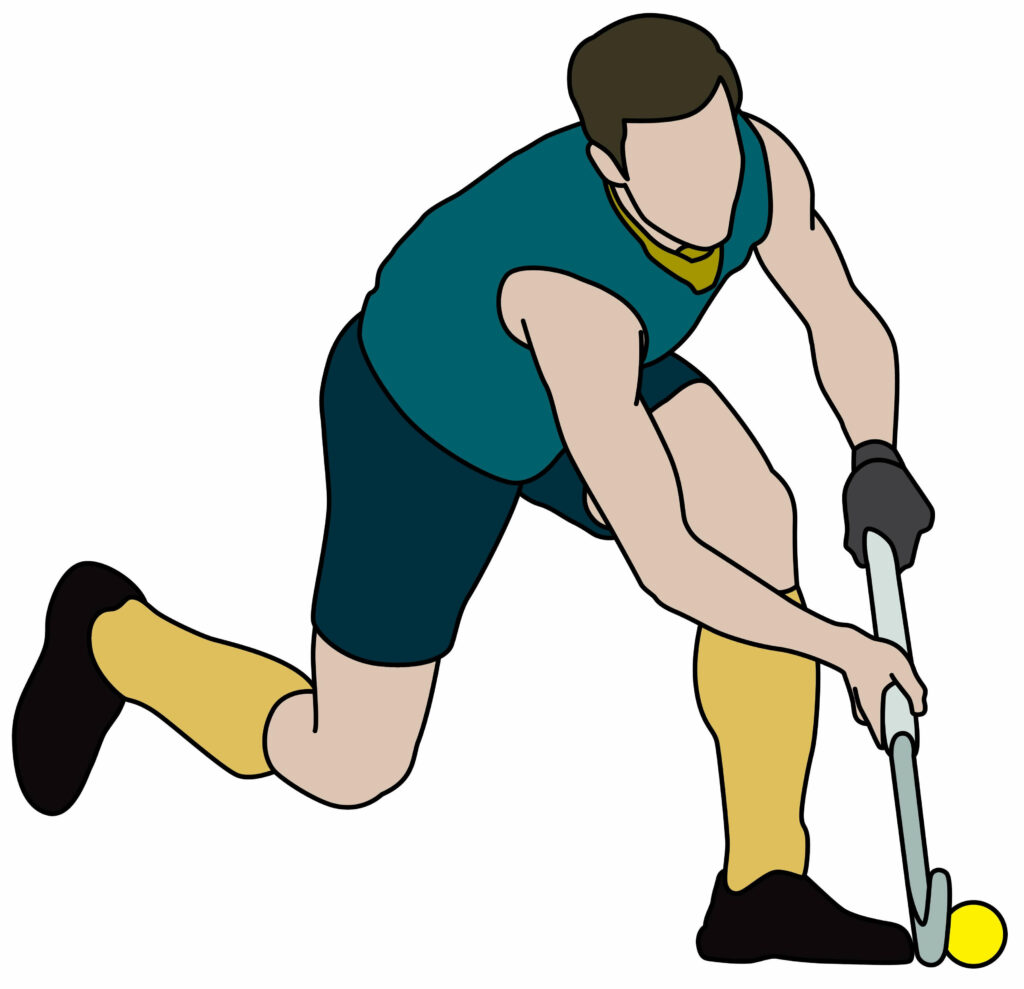
Bonus Tips
When creatively illustrating field hockey players, remember to Structure proportional anatomy early; Use loose gestural lines capturing motion; Integrate equipment like sticks, shoes and ball references from the sport; Observe photos, video, and life references for influential inspiration; Apply textures like fabric folds, grass, and dirt; Direct the eye flow with compositional flow; Repetition aids reliable technique development; Seek dramatic foreshortened perspectives; Experiment with conceptual interpretations introducing fresh visions; most notably, fully enjoy exploring creative frontiers!
Conclusion
We have cooperatively constructed fundamental methods for penciling an original field hockey athlete here through cumulative sketch phases. Thoughtful compositional foundations allow increasingly complex imaginative evolutions. Combined with personalized improvisation, sport familiarity enables unique visions to develop meaningfully through satisfying drawing processes. May this glimpse only suggestively spark further inspiration down your self-directed artwork path, celebrating creativity and sports!

Thanks for reading & feel free to check out more of our articles!
Author Rating
Overall Rating
Summary
Learn how to draw a field hockey player . You will also learn how to advance your drawing so that it looks amazing.

